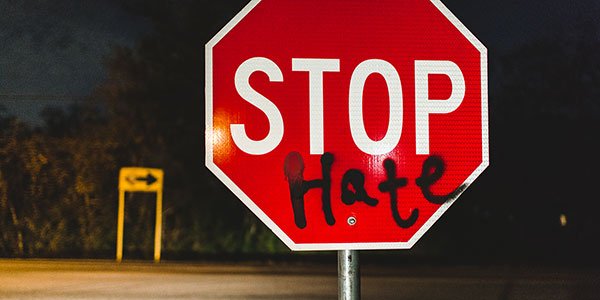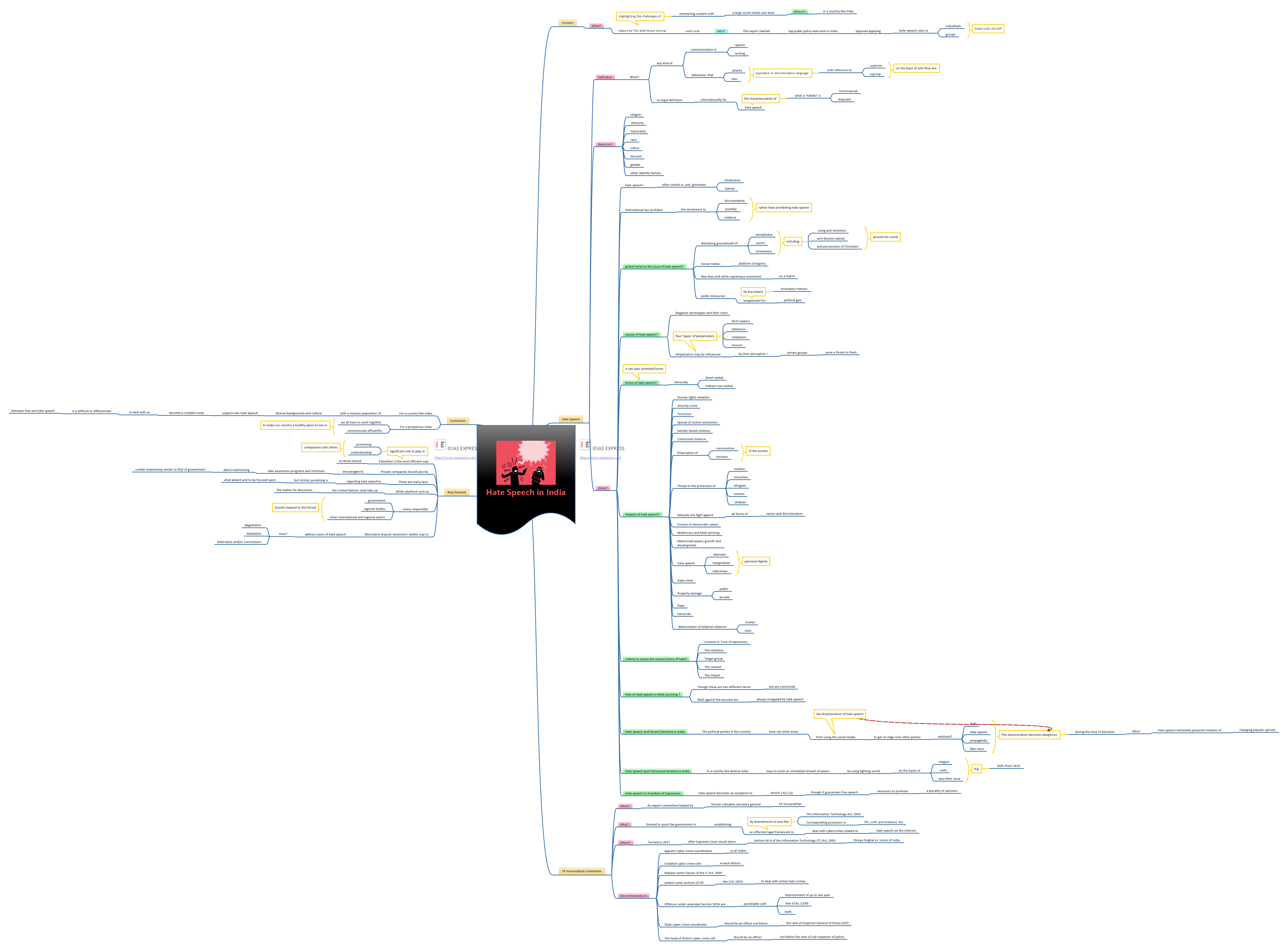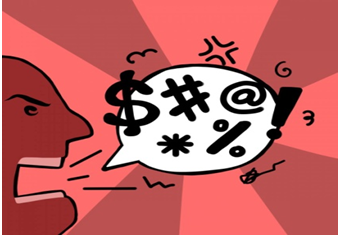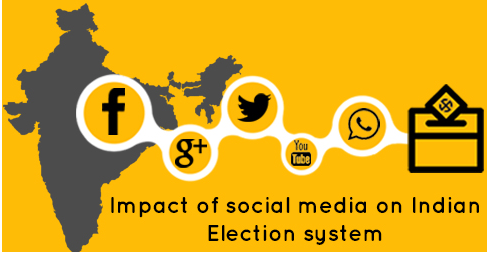Hate Speech in India- Causes, Impacts, Way forward

Recently, the report by The Wall Street Journal highlighting the challenges of monitoring content with a large social media userbase specifically in a country like India went viral. The report claimed that Ankhi Das, Facebook’s top public policy executive in India “opposed applying hate-speech rules” to at least four individuals and groups linked with the BJP, despite they or their post being “flagged internally for promoting or participating in violence.” According to the policy called “Dangerous Individuals and Organizations”, content that praises or supports activity such as “organized hate, mass murder, hate crimes, or terrorist attacks” is to be banned. Owing to this policy, Facebook employees reportedly found that the account of one of the individuals – Telangana BJP MLA T Raja Singh – should have been banned. However, the employees were pulled back from doing so by Ankhi Das claiming “punishing the violations” done by the politicians “would damage the company’s business prospects in the country”.
In this context, let us make an in-depth analysis of the issue of hate speech in India.
This topic of “Hate Speech in India- Causes, Impacts, Way forward” is important from the perspective of the UPSC IAS Examination, which falls under General Studies Portion.
What is Hate Speech?
- There is no legal definition internationally for hate speech, and the characterization of what is ‘hateful’ is controversial and disputed.
- It is generally understood as any kind of communication in speech, writing or behaviour that attacks or uses pejorative or discriminatory language with reference to a person or a group on the basis of who they are.
- In other words, it is based on their religion, ethnicity, nationality, race, colour, descent, gender or other identity factors.
- This is often rooted in, and generates intolerance and hatred and, in certain contexts, can be demeaning and divisive.
- International law prohibits the incitement to discrimination, hostility and violence rather than prohibiting hate speech
- Because Incitement explicitly and deliberately aims at triggering discrimination, hostility and violence, which may also lead to or include terrorism or atrocity crimes, It is a very dangerous form of speech.
- If it does not reach the threshold of incitement then it is not something that international law requires States to prohibit.
- It is important to underline that hate speech may to be harmful even when not prohibited.
What is the global trend on the issue of hate speech?
- We are seeing a disturbing groundswell of xenophobia, racism and intolerance including rising anti-Semitism, anti-Muslim hatred and persecution of Christians around the world.
- Social media and other forms of communication are being exploited as platforms for bigotry.
- Neo-Nazi and white supremacy movements are on the march.
- Public discourse is being weaponized for political gain with incendiary rhetoric that stigmatizes and dehumanizes minorities, migrants, refugees, and women and any so-called “other”.
- As hate is moving into the mainstream in liberal democracies and authoritarian systems alike, this is not an isolated phenomenon or the loud voices of a few people on the fringe of society.
What are the causes of hate speech?
- Negative stereotypes and their roots:
- Negative stereotypes are leading one to think of other groups or individuals as inferior, different and less worthy of respect
- Negative stereotypes appear as a result of the discriminatory institutions, structures and norms which are embedded in the fabric of society and justify and sustain unequal social relations
- There are many such systems including the systems of racism, casteism, sexism, class of colonialism and many others.
- The stereotypical ideas of lower and upper-class people, of indigenous and colonialist, of woman and man, are important parts of these systems.
- Perpetrators of hate speeches can be motivated by a variety of different factors:
- According to some research study from US, there are four ‘types’ of perpetrators, including thrill-seekers (those motivated by a thrill and excitement); defensive (those motivated by a desire to protect their interest/ territory); retaliators (those who act in retaliation for a perceived attack against their own group); and mission (perpetrators who make it their mission in life to eradicate ‘difference’).
- Perpetrators may be influenced by their perception that certain groups pose a threat to them.
What are the forms of hate speech?
- Hate speech not only includes the form of direct enforce.
- Though hate speech is generally defined as direct verbal expressions, it includes also non-verbal expressions such as those contained in images, videos, music or any communicative form of online and offline activity.
- So it can take unlimited forms. For e.g.
- A song/video/tweet/cartoon/manipulated image etc.
What are the Impacts of hate speech?
- The impact of hate speech includes:
- Human rights violation
- Atrocity crime
- Terrorism
- The spread of violent extremism
- Gender-based violence
- Communal Violence
- Polarization of communities and sections of the society
- Threat to the protection of civilians, minorities, refugees, women and children
- Alleviate the fight against all forms of racism and discrimination
- Erosion of democratic values
- Mobocracy and Mob lynching
- Deteriorate peace, growth and development
- Hate speech alienates, marginalizes and undermines personal dignity
- Hate crime
- Property damage- public and private
- Rape
- Genocide
- It can even deteriorate bilateral relations and lead to tussles/wars
What are the criteria to assess the various forms of hate?
- Whatever form a hate speech takes there is no such a thing as “Good hate or Positive hate”
- Assessment of hate speech is essential to make an informed decision about the type of action that one will undertake to a particular case- legal action, mobilizing action, support to the victim or no action at all.
- In order to assess hate speeches, there are a number of criteria that may help to find the degree of hate speech.
- The criteria includes:
- Content or Tone of expression, which covers the type of language used such as an insult or joke
- The intent of the person making the statement- whether they mean to hurt someone or not
- Target group
- The context
- The impact of the statement on individuals or society as a whole
Role of Hate speech in Mob Lynching
- Though these are two different terms but are connected.
- Mob Lynching is connected with the hate speech as most of the time perpetrators of this criminal record and circulates the videos of the issues which is attached with the sentiments of a particular group through various modes like social media and thus provoke Mob Lynching.
- Mob against the accused are always instigated by hate speech.
- For example:
- In 2018 in Bihar, a person was killed by the mob on a message that persons of a particular community had thrown stones at the procession of another community.
- In 2019 a 44-year-old man was lynched to death in this district of Bihar over a hate message of cattle theft.
- In 2018 multiple mob attacks in Andhra Pradesh of Hindi-speaking people as false hate messages spread that child abductor gangs from Bihar and Jharkhand were active in the state.
- Violence against the Sikh community in the year 1984 is the best example of hate speech and mob lynching in India
- Lynching is not a problem that is limited to India. Various UN reports refer to lynching cases from the US, Sudan, Nigeria, Haiti and other countries.
Hate Speech and Recent Elections in India
(NB: Though India claims POK is a part of it, Globally Indian map is represented as in the image)
- The recent trend of elections worldwide shows that social media has become a buzzword. It had a huge role to play in determining the fate of elections.
- Similar to the global trend the Indian elections are also been affected by social media and it has been responsible for swaying people’s opinion one way or the other.
- The political parties in the country have not shied away from using these platforms to get an edge over other parties.
- The ways they adopted have not all been ethical and rather Machiavellian as trolls, hate speech and propaganda are unethical means to achieve ambitious political goals as against rational and constructive speeches to gain the favour of the public. They have led to an increased amount of fake content and flow of misinformation and disinformation.
- Social media has been instrumental rather negatively in the dissemination of hate speech. It can be defined as an effort to marginalize individuals based on their membership in a group and expressing hatred of a particular group of people.
- Also, speeches in most of the recent election rallies or during campaigning of various political parties were in the tone of generating ‘hatred’.
- This dissemination becomes dangerous during the time of elections since hate speech is an extremely powerful medium of changing popular opinion against a community as even the basis of hate speech is the ‘politics of hate’.
Hate Speech and Communal tensions in India
- Communal violence has a long history in India. In fact, communal violence had started before the arrival of the British rulers in India.
- Because of communal hate campaign, India has experienced many communal riots in past as well as in present. Out of which the recent example is Delhi Riots 2020
- In a country like diverse India, it is easy to incite an immediate breach of peace by using fighting words on the bases of religion and caste and in the present era, many controversial people for getting unfair advantage have been using their freedom of speech and expression for inciting violence between people belonging to different religion, caste, beliefs and customs.
Hate speech Vs Freedom of Expression:
What is freedom of expression and where does it come from?
- Indian Constitution provides the right of freedom, given in article 19 with the view of guaranteeing individual rights that were considered vital by the framers of the constitution.
- The right to freedom in Article 19 guarantees the freedom of speech and expression, as one of its six freedoms.
- Article 19(1) (a) of the Indian Constitution guarantees the right to freedom of speech and expression to all its citizens.
- The law states that “all citizens shall have the right to freedom of speech and expression”.
- Under Article 19(2)“reasonable restrictions can be imposed on the exercise of this right for certain purposes.
- Any limitation on the exercise of the right under Article 19(1)(a) not falling within the four corners of Article 19(2) cannot be valid.
- The freedom of speech under Article 19(1)(a) includes the right to express one’s views and opinions at any issue through any medium, for example, by words of mouth, writing, printing, picture, film, movie etc.
- It thus includes the freedom of communication and the right to propagate or publish opinion.
- This freedom is not a license to make unfounded and irresponsible allegations against the judiciary.
What is the status of hate speech in the Indian constitution?
- Hate Speech has not been defined in any of the laws of the country, only prohibitions for using certain forms of speeches and expressions are stated.
- In the 267th Report of the Law Commission of India, hate speech is stated as “an incitement to hatred primarily against a group of persons defined in terms of gender, race, ethnicity, sexual orientation, religious belief and the like.
- Apart from the Constitution, there are various other legislation and self-regulatory mechanisms under which hate speech is negated, like:
- The Indian Penal Code, 1860: Section 124A; Section 153A [5] etc.
- The Representation of the People Act, 1951: Section 8[11]; Section 324 etc.
- The Protection of Civil Rights Act, 1955: Section 7[13] etc.
- The Code of Criminal Procedure, 1973: Section 95[15] etc.
That is, Hate speech becomes an exception to Article 19(1) (a) though it guarantees free speech that is necessary to promote a plurality of opinions.
TK Viswanathan Committee Recommendations to deal with hate speech on the internet
- An expert committee headed by former Loksabha secretary general TK Viswanathan to deal with cybercrimes especially online hate speech has submitted its report to Union Home Ministry.
- It was formed in 2017 after Supreme Court struck down Section 66 A of the Information Technology (IT) Act, 2000 in Shreya Singhal vs. Union of India.
- Section 66 A of IT Act was added to criminalize sending of offensive messages through a computer or other communication devices.
- It was formed to assist the government in establishing an effective legal framework to deal with cybercrimes related to hate speech on the internet.
- The committee was having members from Law Ministry, CBI and Ministry of Home Affairs.
- It was tasked to study and examine existing domestic cyber laws and international cyber legislation and propose measures, amendments to present laws.
- It was also mandated to recommend amendments to the following acts to facilitate the establishment of a strong legal framework to fight cybercrimes:
- The Information Technology Act, 2000
- Corresponding provisions in IPC, CrPC and Evidence Act
- The committee was also mandated to draw a roadmap taking into account the need of legal competence and expertise on cyber laws from investigation, prosecution and judiciary angles.
Recommendations
- Appoint cybercrime coordinators in all states
- Establish cybercrime cells in each district.
- Replace some clauses of the IT Act, 2000 and amend some sections of IPC like 153, 505A to deal with online hate crimes.
- The punishment under the amended clause which deals with the prohibition of incitement to hatred is two years imprisonment or fine of Rs. 5,000 or both.
- Offences under amended Section 505A are punishable with imprisonment of up to one year or fine of Rs. 5,000 or both.
- State cybercrime coordinator should be an officer not below the rank of Inspector General of Police (IGP).
- The head of district cybercrime cell should be an officer not below the rank of sub-inspector of police.
Way Forward
- Education is the most efficient way to dilute hatred. Our education system has a significant role to play in promoting and understanding compassion with others.
- Private companies should also be encouraged to take awareness programs and initiatives about maintaining cordial relationship similar to that of government.
- There are many laws regarding hate speeches but stricter penalizing is what absent and to be focused upon because religious sentiments and beliefs are a precious thing for an individual.
- Fight against hate speech cannot be isolated. Wider platform such as the United Nations shall take up the matter for discussion.
- Each and every responsible government, regional bodies, and other international and regional actors should respond to this threat.
- Alternative dispute resolution is a better way to address cases of hate speech as it proposes a shift from the long procedures of the court to the settlement of the dispute between parties by way of
- Negotiation
- Mediation
- Arbitration and/or Conciliation.
Conclusion
- Subjects like hate speeches become a complex issue to deal with, in a country like India which is very diverse, as it was very difficult to differentiate between free and hate speech.
- There are many factors which should be considered while restraining speeches like strong opinions, offensive comments towards certain communities, the effect on values like dignity, liberty and equality
- There are laws for such atrocities but certainly, a major part of work is still left
- We all have to work together and communicate efficiently for our country to be a healthy place to live in
Practice Question for Mains
- Examine how hate speech poses complex challenges to freedom of speech and expression (250Words)
- What is mean by hate speech? List down the recommendation made by TK Vishwanathan committee to deal with hate speech on the internet (150Words)
http://rsrr.in/2019/06/23/hate-speech-trolls-and-elections-a-nefarious-nexus/
https://sharingperspectivesfoundation.com/video-lecture/causes-and-consequences-of-hate-speech/
https://sharingperspectivesfoundation.com/video-lecture/forms-of-hate-speech/
https://www.thehindu.com/opinion/lead/in-hate-crime-fight-a-voice-still-feeble/article28775760.ece
https://unesdoc.unesco.org/ark:/48223/pf0000233231
https://www.latestlaws.com/wp-content/uploads/2018/05/NLUD-Report-on-Hate-Speech-Laws-in-India.pdf
http://www.legalserviceindia.com/legal/article-1056-hate-speech-in-india.html




